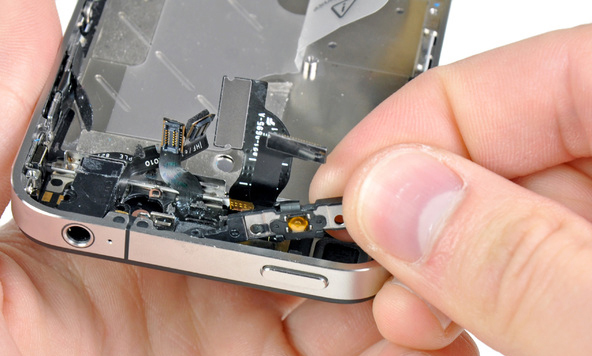A California U.S. District judge derailed a potential class-action lawsuit against Apple and AT&T earlier this week, rejecting a complaint that the two companies conspired against fixing a defect in the popular iPhone 4 and iPhone 4S handsets. Two California consumers had alleged a “wiggly” power button presented a safety hazard which both the tech giant and the carrier kept hidden in order to sell more of the handsets.
On Wednesday, U.S. District Court Judge Gary Feess dismissed the argument for a racketeering charge, ruling the safety hazards were “speculative” and occurred beyond the product’s warranty period. The court’s rejection could influence a second similar federal lawsuit still making its way through the legal system…
In his ruling, Feess stated Apple was not obligated to reveal product flaws which happened after the iPhone’s one-year warranty expired. Additionally, the judge called “speculative” the claims made by Ross Missaghi and Charles Thompson.
The two alleged a faulty design of the power button on the iPhone 4 and iPhone 4S posed a safety hazard.
GigaOM has a quote from the judge’s ruling:
Certainly being stranded in a broken down car, where there may not even be cell service, is as speculative a safety concern as being stranded with a broken phone.
From the dismissal:
Thus, every time plaintiffs or another owner of a defective iPhone 4 or iPhone 4s brings the device on an airplane, unless the individual has thought ahead and gone through the inconvenience and time required to allow the battery to drain, the defect causes potential interference with ‘communications, navigation, flight control, and electronic equipment’ in the airplane.
The defect thus presents a safety hazard not only to the owner, but to everyone else on the airplane, as well as potentially people on the ground.
The lawsuit had alleged the claim fell under the RICO statue, since Apple and AT&T supposedly conspired to hide the defect in order to sell more of the phones.
Fees also dismissed the claim that the alleged “wiggly” power button could possibly harm airline travelers. Although these original claims were dismissed, the plaintiffs have until September 13 to file a modified pleading of liability.
In May, a second case was filed arguing that “the flex cable mechanism attached to the power button would become inoperable after extended use, usually after Apple’s one-year warranty had expired,” writes AppleInsider.
That case, which also attempts to launch a class-action lawsuit against Apple’s deep pockets, is reportedly mired in court paperwork.
Image top of post via iFixit.
